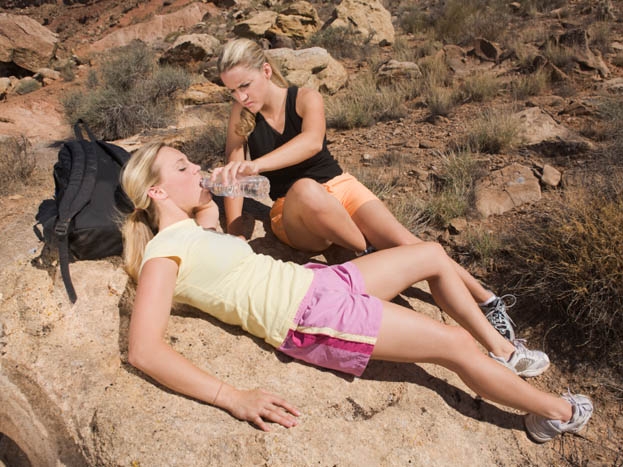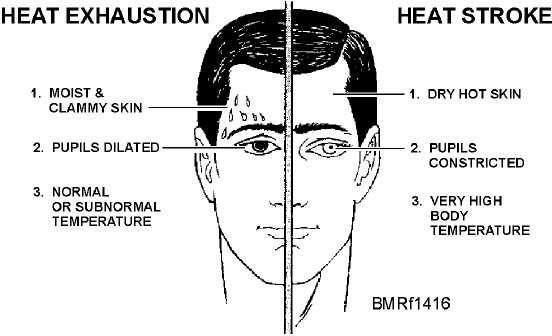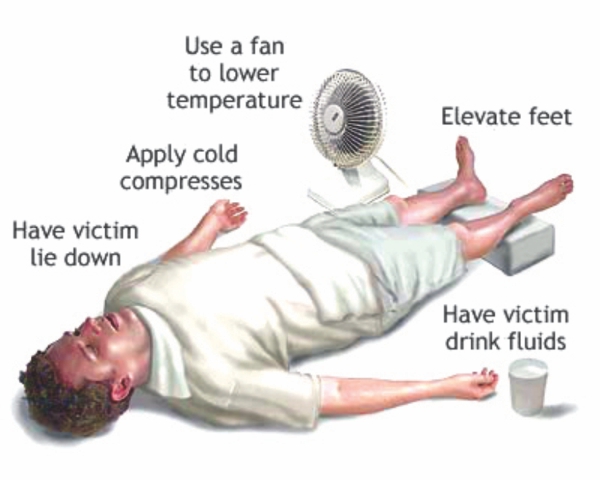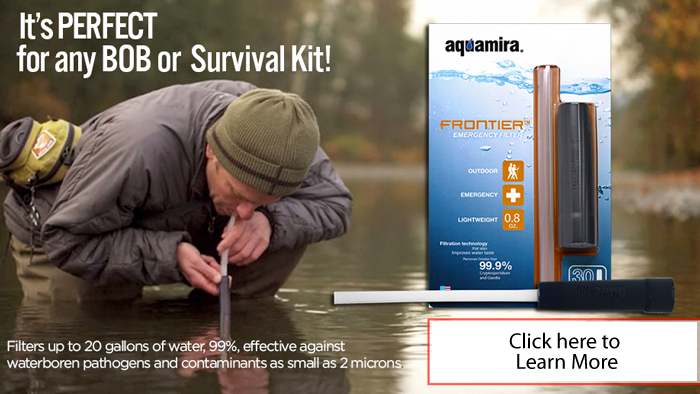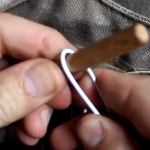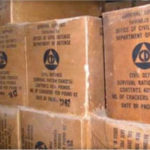Heat exposure is something that can sneak up on you very quickly, and the symptoms are not always obvious at first. It can also occur in conditions where temperatures are not extremely high. It is very important to know about some of the warning signs and contributing factors so that you will be able avoid the severe impact that excessive heat can have on the body. Let’s take a look at how you can keep your temperature in check and ensure that you do not endanger your health and safety during a crisis.
Heat Exhaustion vs Heat Stroke
Both terms encompass different ranges along a broad scale of symptoms and physiological impacts that heat has on the body. Symptoms can be as minor as profuse sweating and a little bit of dizziness all the way to kidney failure, heart attack or coma. Suffering from a heat stroke does not mean that you had a stroke in the traditional sense of the word. However, it represents a severe form of heat exposure that generally requires immediate medical attention.
What Happens to the Body
Heat stresses on the body can occur anywhere and under any condition. While it is true that being under the hot desert sun for a prolonged period of time can quickly raise your core temperature and accelerate dehydration, you can also suffer from exposure in the middle of the winter. The main things to avoid are getting your core temperature to rise and preventing that heat from escaping. Sweating is the body’s way of eliminating heat while also creating a layer of moisture that cools the skin. However, sweating also leads to fluid loss and potential dehydration. The key in both hot as well as cool conditions is to eliminate the causes of the problem as quickly as possible.
As body temperatures rise, a wide-range of symptoms will begin to develop that usually progress from minor to severe. The first sign is usually a lot of sweating along with some minor dizziness. You may also feel a little bit disconnected or numb from what’s happening around you. Another important indicator to pay attention to is fatigue. Your body and mind will begin to send signals that warn you to slow down, get some water and lower your core temperature.
As conditions progress, you may become confused, irritable, experience an increasingly rapid heartbeat along with rapid and short breaths. Headaches, abdominal cramps and pale, clammy skin will also develop. Staggering or signs that mimic alcohol intoxication are also common. Another tell-tale sign of heat exposure is dark colored urine or a lack of urine at all due to dehydration. However, it is important to note that you do not need to be dehydrated in order to suffer from severe effects of heat exposure. Severe symptoms include a worsening headache, nausea and vomiting, skin that turns red, hot and dry along with a cessation of sweating. Seizures, unconsciousness and cardiac arrest are also possible along with organ failure, brain damage and ultimately death.
Managing and Treating Exposure
The key to keeping symptoms from getting worse is to give the body a way to release heat while also removing the source. This usually involves finding a shady place, removing as much clothing as possible and ingesting a steady supply of water. You also want to add a minor amount of salt or electrolytes if symptoms are getting severe. Fanning the body will help to cool the skin and carry heat away as well. Another very important way to control heat exposure is to limit physical activity as much as possible until symptoms subside.
Prevention
Limiting physical activity, reducing the amount of exposure and avoiding diuretics, or liquids that dehydrate the body are key components of prevention. This includes avoiding alcohol or caffeine consumption at all costs. You also want to make sure that you have plenty of water for drinking as well as for cooling the skin. Expect to drink a minimum of a quart or more of water every hour while you are exposed to a hot environment. You will need to consume a lot more if you are in direct sunlight, exposed to a very hot and humid environment and exerting a lot of physical energy. A good indicator that you are adequately hydrated is to look at your urine. Aim for a color that ranges from a medium to light yellow. If you are peeing clear water, then you are hydrated to the point where you may actually be wasting water. If the color gets darker, then you want to increase consumption.
Finally, make sure that you are prepared for the conditions that you may encounter in your travels. Dress appropriately, keep plenty of water on hand and make sure that you have access to shade. Remember that your mental state will be impaired as symptoms of heat exhaustion become more severe, and this can influence your decision making process and judgment. Don’t take any unnecessary risks and make sure that you prioritize cooling down and remaining hydrated above all else.


